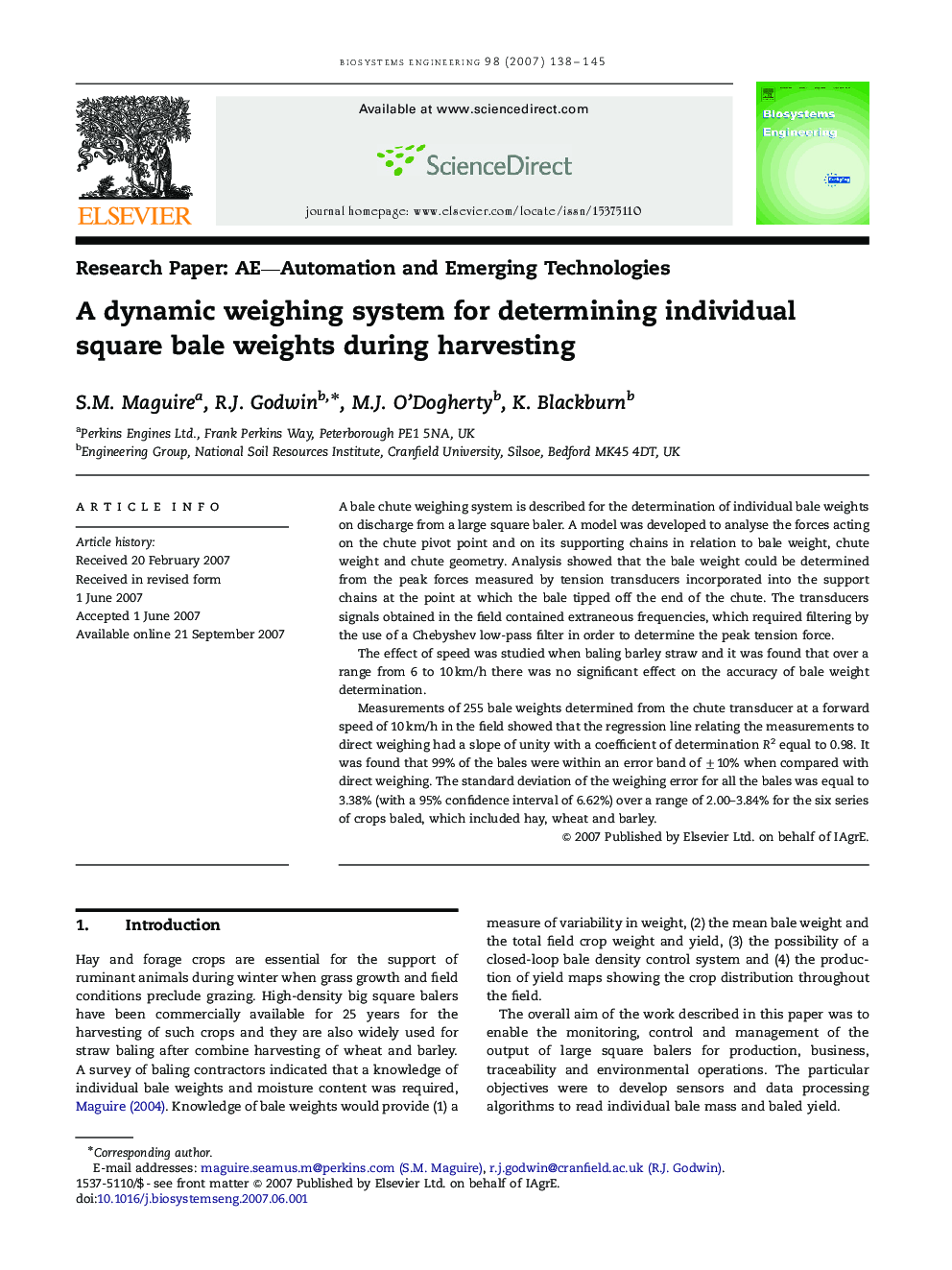| Article ID | Journal | Published Year | Pages | File Type |
|---|---|---|---|---|
| 1712570 | Biosystems Engineering | 2007 | 8 Pages |
A bale chute weighing system is described for the determination of individual bale weights on discharge from a large square baler. A model was developed to analyse the forces acting on the chute pivot point and on its supporting chains in relation to bale weight, chute weight and chute geometry. Analysis showed that the bale weight could be determined from the peak forces measured by tension transducers incorporated into the support chains at the point at which the bale tipped off the end of the chute. The transducers signals obtained in the field contained extraneous frequencies, which required filtering by the use of a Chebyshev low-pass filter in order to determine the peak tension force.The effect of speed was studied when baling barley straw and it was found that over a range from 6 to 10 km/h there was no significant effect on the accuracy of bale weight determination.Measurements of 255 bale weights determined from the chute transducer at a forward speed of 10 km/h in the field showed that the regression line relating the measurements to direct weighing had a slope of unity with a coefficient of determination R2 equal to 0.98. It was found that 99% of the bales were within an error band of ±10% when compared with direct weighing. The standard deviation of the weighing error for all the bales was equal to 3.38% (with a 95% confidence interval of 6.62%) over a range of 2.00–3.84% for the six series of crops baled, which included hay, wheat and barley.
